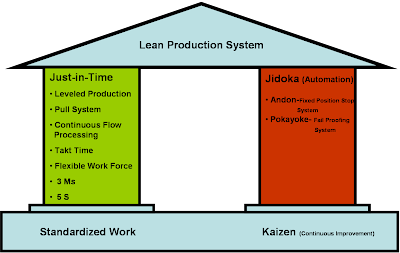Objectives of Just in Time System
The Just in Time system itself wants to make the best out of what businesses have. In order to be successful and a stand-alone business within the world of fascinating competition and unstoppable economical growths, businesses have to balance their cash in hands. First, the Just in Time system balances inventory quantity. If a business can lower their inventory or just continue a habit of keeping stocks low, it is most likely that they will be successful in terms of finance. Zero lead time is also one of the objectives. Waiting for products to be manufactured or processed can always be the most boring thing ever. With Zero lead time, businesses will no longer make their customers wait and will, perhaps, even increase customers as time passes by. Zero failures or waste elimination is needed for all businesses. If businesses can eliminate as much wastes as possible, more benefits and advantages will be waiting for them in the future. Eliminate seven types of wastes is indeed a good method businesses could use to lower risks and maximize profits. The first waste, perhaps the biggest one of all is overproduction. Overproduction increases stock quantity and increases costs and expenses for businesses without getting many profits in turn. Waiting is a big problem and therefore has to be solved as quickly as possible to avoid turnover rates and minimization of customers. Transportation is indeed a great issue when it comes to Just in Time. If distances are too long and far, consider the necessity in delivery services and compare them to current financial situations before making further decisions. Look for unnecessary production processes that run within a system. Eliminate them if possible to avoid costs and unnecessary payments that will not do any good for a business’s health. Check stocks and try to lower them as much as possible to prevent stocks quantity from going higher and higher because there are fees charged. Unnecessary movements and actions can also be eliminated to reduce costs and expenses. Furthermore, the production of wastes or defective products has to be removed as soon as possible before errors interrupt other parts of a production line or operations.
Effects of Just in Time
With the Just in Time, businesses will produce small lots of products and will limit quantity in order to limit or reduce costs and expenses. The system itself will result in a short production time because lesser amount of products are needed to be produced. Therefore, lesser time is needed whereas each area of production will have to focus more on their tasks which will overall enhance product quality. With the system, the WIP will also be reduced because JIT strives to produce only what is needed and keep stocks low or sometimes have no stocks at all. It also helps bind teams together by encouraging teamwork when it comes to problems needed to be solved in a limited period of time. With teamwork and cooperation, businesses can oversee all parts of the production line which upgrades quality and performance.
 Benefits of Just in Time
Benefits of Just in Time1. The system upgrades quality and performance of a business, producing fixed amount products with high quality and eliminating unnecessary factors in a business.
2. It feeds the demands pretty quickly and brings large amounts of customers in. Since production is actively done and well organized, production takes lesser time and multi-tasking can be done easily in the system.
3. Teams and workers will become more cooperative and will build up more responsibility in work time due to constant work and the ability to solve problems and face challenges together as a whole.


